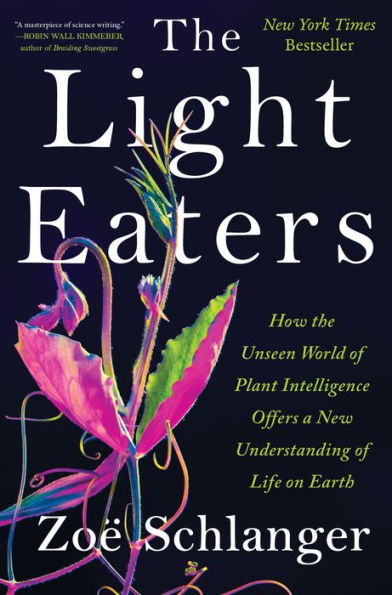Review by Richard Phillips

Author Zoe Schlanger is a well-known writer for The Atlantic who got burned out reporting on climate change issues. She found that she could use her love of plants as a basis to report on the evolving science of plant intelligence, though she finds that plant scientists are generally averse to use the term “intelligence” with reference to plants.
Their reluctance to use that term goes back to the book The Secret Life of Plants, published in 1973, and the subsequent documentary film of the same name, released in 1978, with a soundtrack by Stevie Wonder! I certainly remember that movie and I suspect many of you do also. The authors suggested that plants could feel and hear and even read our minds. They reported that plants reacted to music and preferred classical to rock and roll. You may have even been one of those who kept the stereo on for your plant’s enjoyment and stimulation. The book was a blend of poorly designed scientific experiments and unscientific projections. Much of what was reported has since been debunked, but the book and movie were great hits and caught people’s imaginations about the possibility that plants are capable of more than just photosynthesis.
Due to the uproar over the book’s lack of credibility, funding for rigorous plant consciousness research dried up. No funding organizations wanted to spend money on what was then considered to be poor science. Therefore, legitimate researchers changed research direction or went underground with their work. It became difficult to get their research published and when it was, their findings were rigorously disputed by mainstream plant scientists.
They can eat light, isn’t that enough?
Timothy Plowman, Botanist
However, things have been changing radically over the last decade and a half. There is still a reluctance to use a term like plant intelligence, but good science confirms that plants are truly aware of their above-ground and below-ground surroundings and react to what they find. Scientists are at least willing to use a term like plant consciousness.
The book is full of examples of how plants interact with their environment. Did you know that some plants are aware when something (you?) touches them and can make an appropriate response? If they detect that it is an insect eating them, some plants start producing toxic or noxious chemicals to stop the predation. Some plants even issue pheromones to warn their neighbors of an impending attack.
One of my favorite anecdotes is about corn plants, which are able to identify the specific species of caterpillar munching on them and then issue a pheromone that attracts the specific species of wasp that preys on that caterpillar.
Many plants have also been shown to favor relatives. Researchers found that if rows of sunflowers are planted with seeds from the same mother plant, they can get up to 47 percent more oil production than if the rows are planted with non-related seeds. Related plants were found to compete less for root space and to even adjust their leaf positions so they do not shade their neighbors.
The book is full of stories like this. Even though the author is reporting on dry research studies, it is very readable. She discusses her conversations with the researchers and goes on field trips with some of them to see their work first-hand. She also blends in tales of her own love of plants and how her views have changed as she has learned more about their capabilities. Hmmm. I wonder if they are actually feeling pain when I pick a flower?
